THE SECOND EXPEDITION (1924-1927)
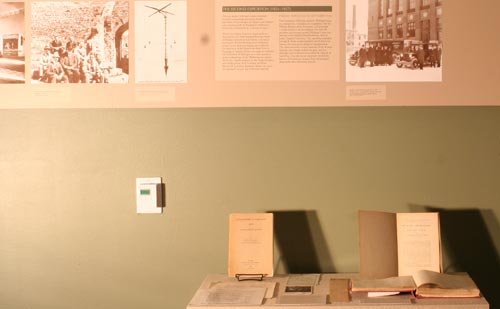
Click on objects on the picture to see larger images
More Topics
The late period of Kelsey's career involved multiple archaeological projects, further purchases of manuscripts and papyri, and Kelsey's own ongoing work on Pompeii in addition to numerous publications on a variety of topics. Three excavations, however, stand out from this period: one of the imperial Roman colony of Pisidian Antioch in Asia Minor, a second at the Graeco-Roman farming town of Karanis in the Fayum district of Egypt, and a third at the sanctuary of the Phoenician deity Tanit at Carthage in Tunisia. Kelsey was eager to establish the University of Michigan as a major presence in the archaeology of the Mediterranean region.
The excavation of Pisidian Antioch (1924), Michigan's first at a classical site, took place in cooperation with Sir William Ramsey of the University of Edinburgh. Michigan's team was directed in the field by David Robinson, then of Johns Hopkins University. The expedition included George R. Swain as photographer and Kelsey's son Easton, who was put in charge of transportation. The team excavated a major sanctuary of the Roman imperial cult, a triple-arched city gate, and two churches, one of which is now called the Church of Saint Paul. The site was an important one for the history of Christianity because Paul had preached there on his first missionary journey.
From the time of his first visit to Tunisia in 1893, Kelsey had maintained an interest in Carthage, Rome's greatest rival of the Republican period, whose armies had been led by Hannibal during the three Punic Wars between Carthage and Rome. Fabled home of the Phoenician (Punic) Queen Dido, whose ill-fated love affair with the Trojan hero Aeneas was chronicled by Virgil in his Aeneid, Carthage was destroyed by Rome's forces, and the earth was said to be salted to prevent a resurgence of the city. Along with the city, the sanctuary of the Phoenician deity Tanit, where the sacrifice of human infants reputedly took place, was leveled. This sanctuary, known as the Tophet, was the site of Michigan's project in 1925. Kelsey had larger plans for exploring Carthage, but he was thwarted by difficulties in gaining funding and official permits.
Kelsey first became interested in Karanis because of the many papyrus documents found there. Upon visiting Karanis in 1920, Kelsey's interest in the people who used papyri grew. He began to see the site as a rich source of information about the lives of common people in ancient Egypt, a subject sometimes overlooked by scholars of his day. The excavation at Karanis yielded an impressive array of artifacts of daily life, from tools and toys to food scraps and wall paintings. Nearly 45,000 objects from Karanis would come to form the core of the collection of the Kelsey Museum, where they still provide some of the best available evidence for village life in Graeco-Roman Egypt.
-
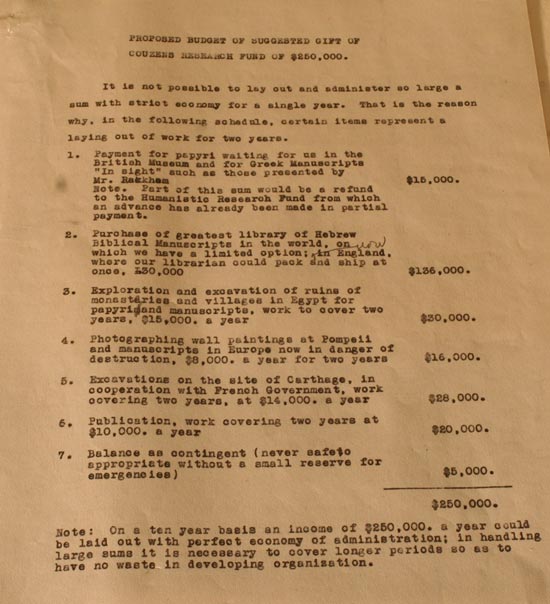
A proposed budget for a gift Kelsey requested from James Couzens, mayor of Detroit and vice president and general manager of Ford Motor Company Bentley Historical Library, Kelsey Museum Papers
-
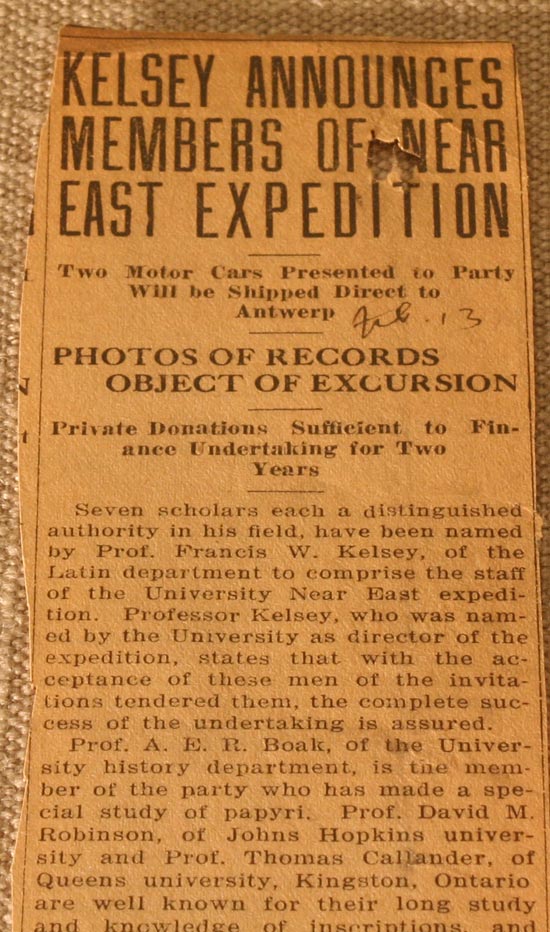
Newspaper article announcing the Second Expedition Bentley Historical Library, Kelsey Museum Papers
-
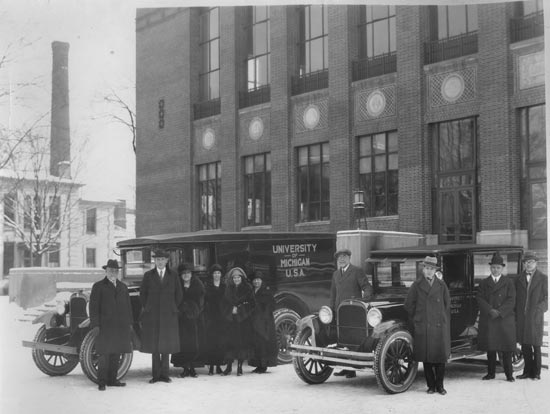
Kelsey and others outside the U-M Library with expedition vehicles donated by Mr. Bloomer and Graham Bros. Kelsey Museum Archives
Click on the picture to enlarge
-
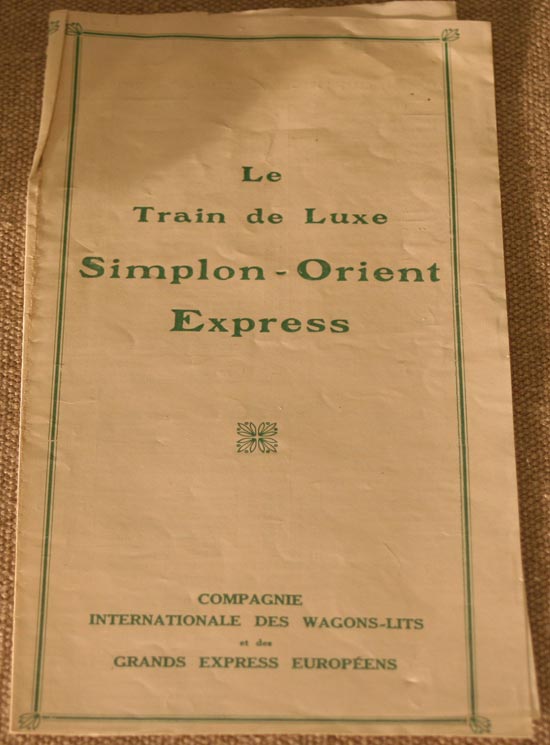
Schedule of the Orient Express from London to Istanbul (Constantinople) from Kelsey's diary of 1924 Bentley Historical Library, Kelsey Museum Papers
-
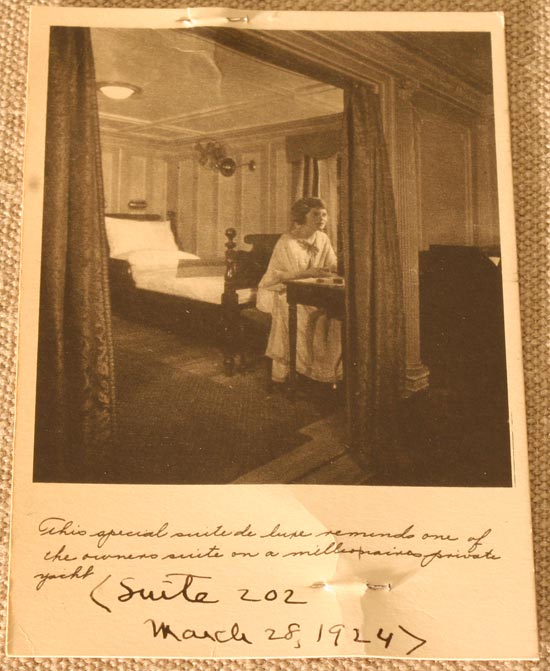
Postcard of the stateroom Kelsey occupied on the steamship he sailed on in 1924 Bentley Historical Library, Kelsey Museum Papers
-
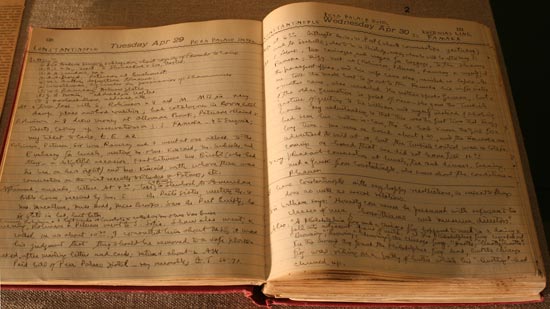
Diary of 1924 with reference to the excavation of Antioch Bentley Historical Library, Kelsey Museum Papers
-

Truck and car going over mountain pass en route to Antioch Photo: George R. Swain, Kelsey Museum neg. 5.0158
-
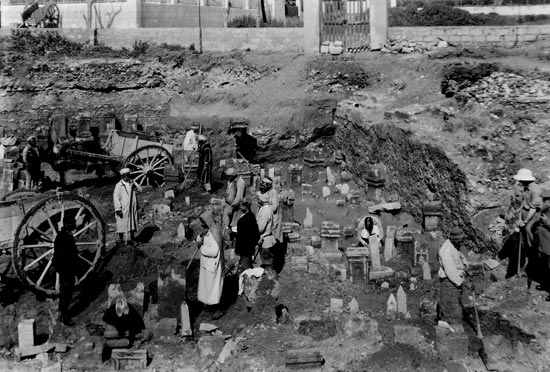
Excavating at the Tophet, sanctuary of the goddess Tanit, Carthage Photo: George R. Swain, Kelsey Museum neg. 7.1872
-
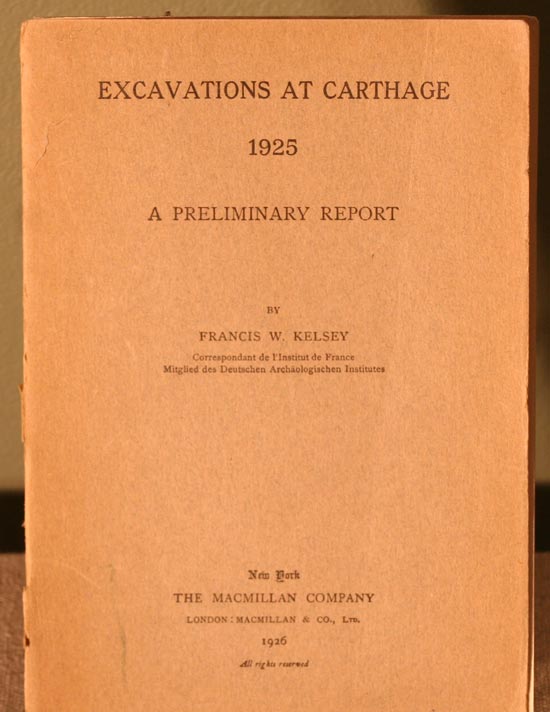
Kelsey's preliminary report on excavations at Carthage
-
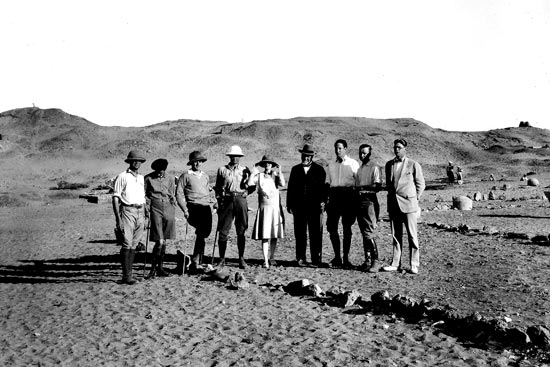
Kelsey with excavation team, Karanis Photo: George R. Swain, Kelsey Museum neg. 5.2373
Click on the picture to enlarge
-
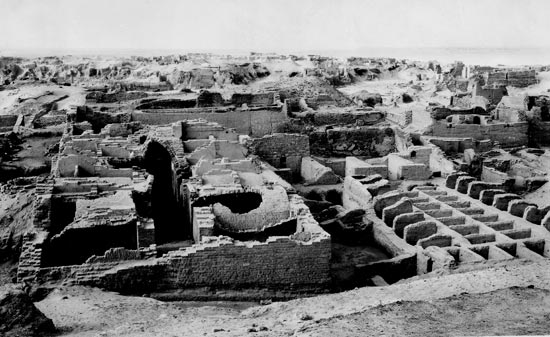
Granary building, Karanis George R. Swain, Kelsey Museum neg. 7.2368
-
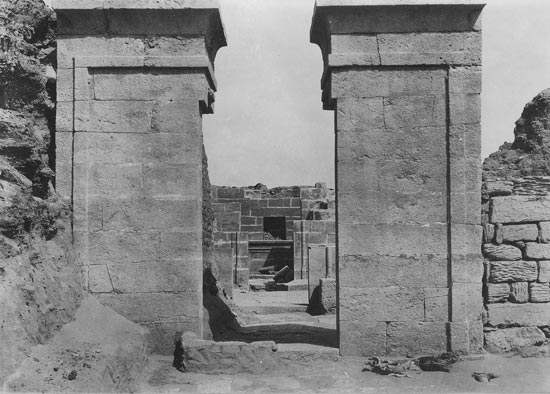
North temple of the crocodile gods, Karanis Photo: George R. Swain, Kelsey Museum neg. 5.1644
-
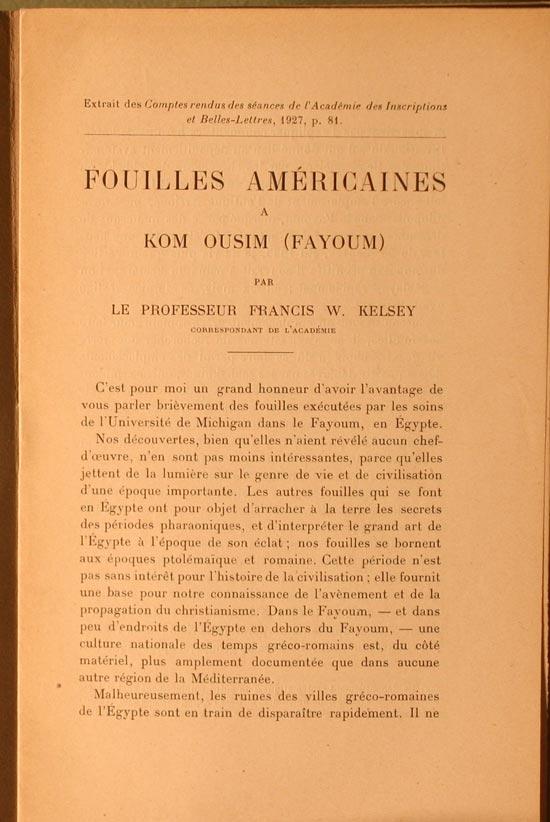
Kelsey's preliminary report on excavations at Karanis (Kom Ousim)